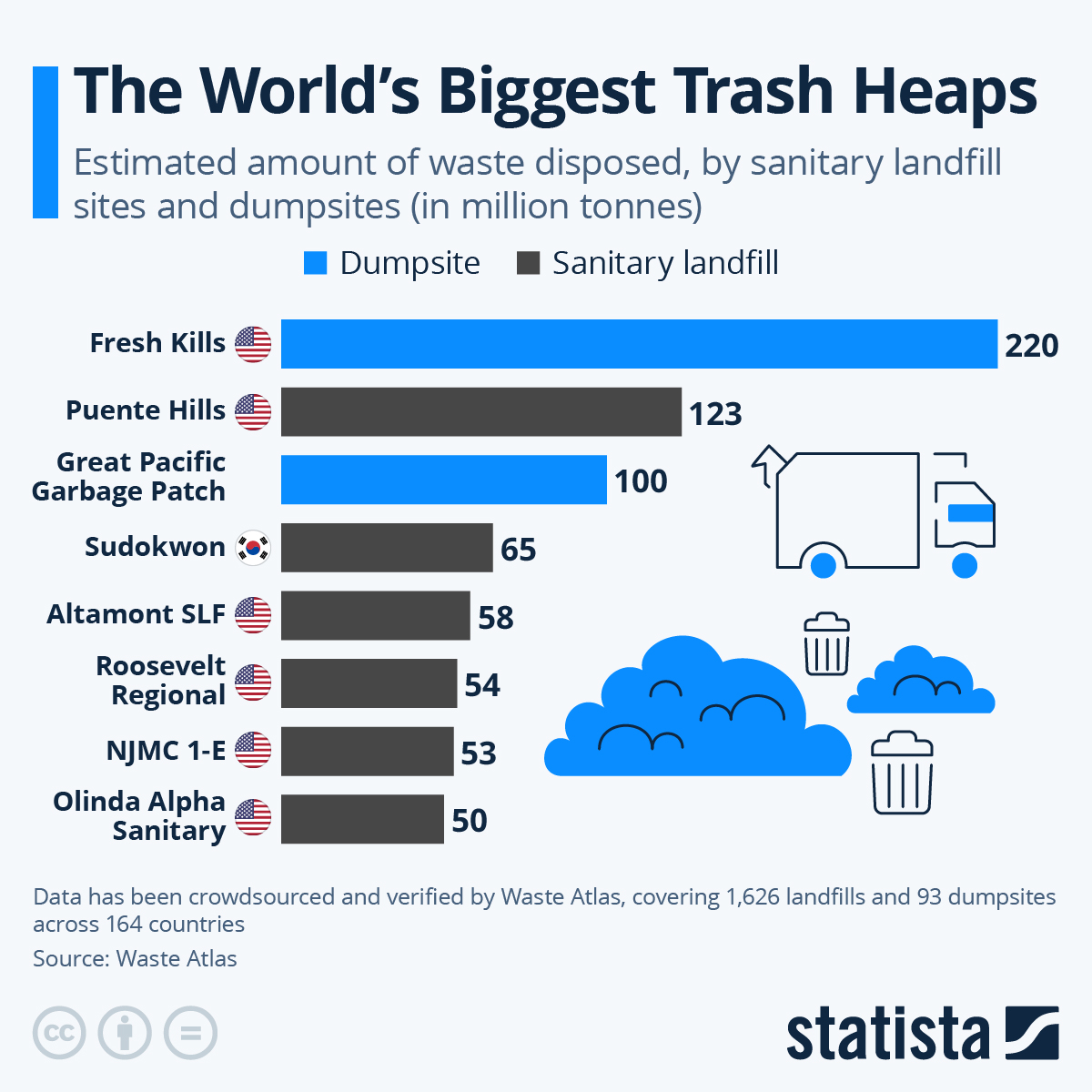Most of the world’s largest trash heaps are in the United States.
As Statista's Anna Fleck details below, according to crowdsourced data verified by the collaborative online platform Waste Atlas, the former dumpsite Fresh Kills tops the list. The site is estimated to contain 220 million tonnes of waste, including debris from the September 11 attacks. It closed in 2001 and a public park is now being built on top of it.
You will find more infographics at Statista
Fresh Kills was historically established as a dumpsite in the mid 20th century, at which time it lacked the environmental safeguards, such as impermeable liners and leachate collection systems, to safely contain and manage waste in a way that would qualify as a sanitary landfill site.
The other major unregulated dumpsite to appear on this list is the Great Pacific Garbage Patch, found in the North Pacific Ocean between Hawaii and California. It is thought to measure 100 million tonnes. However, estimates vary considerably, with The Ocean Cleanup project suggesting the patch contains closer to 100,000 tonnes of garbage. This is partly due to the fact it does not have a defined boundary as it is made up of floating plastic and microplastics, which are constantly in motion due to ocean currents and winds.
As the following chart shows, Sudokwon landfill in South Korea is the only other site in the roundup outside of the United States. Containing 65 million tonnes of waste, it comes in rank four. The site is expected to stop accepting non-incinerated waste next year due to limited capacity, according to The Korea Times.
The U.S. faces a major waste problem, with a high reliance on single-use and disposable plastics as well as a culture of low recycling and composting rates. According to environmental health consultancy CLYME Environmental, the U.S. could run out of existing landfill space by 2036.
Loading recommendations...
